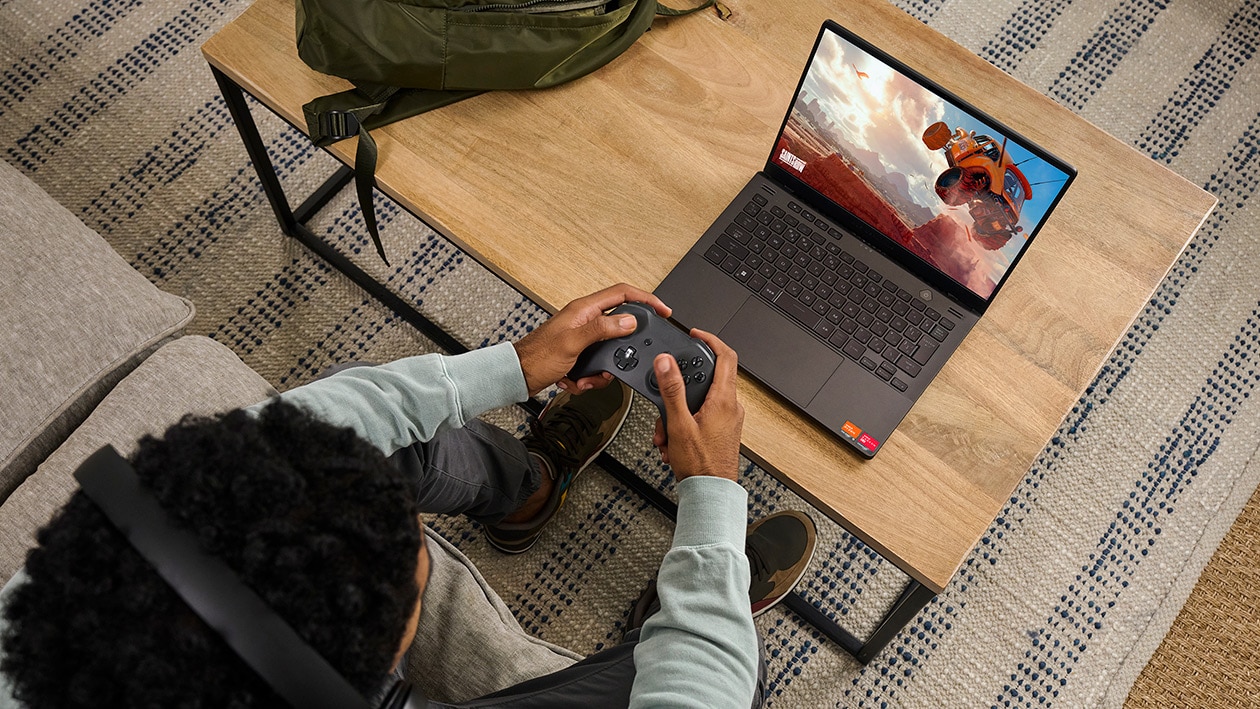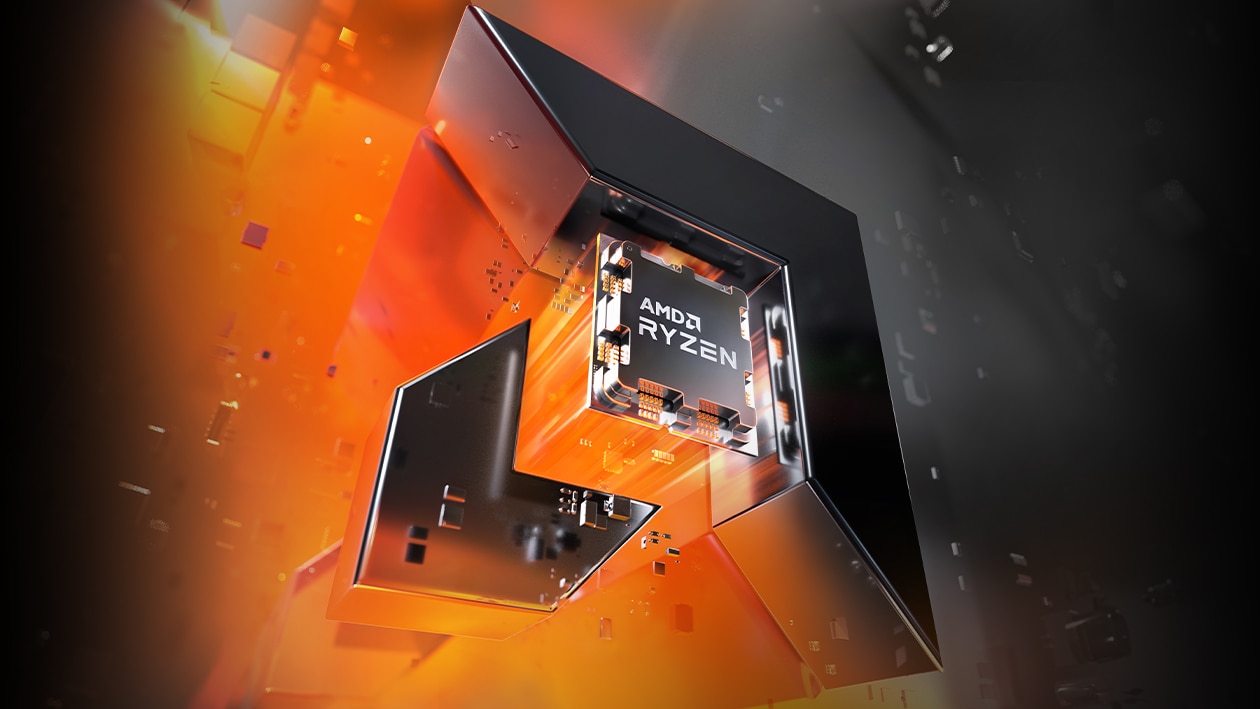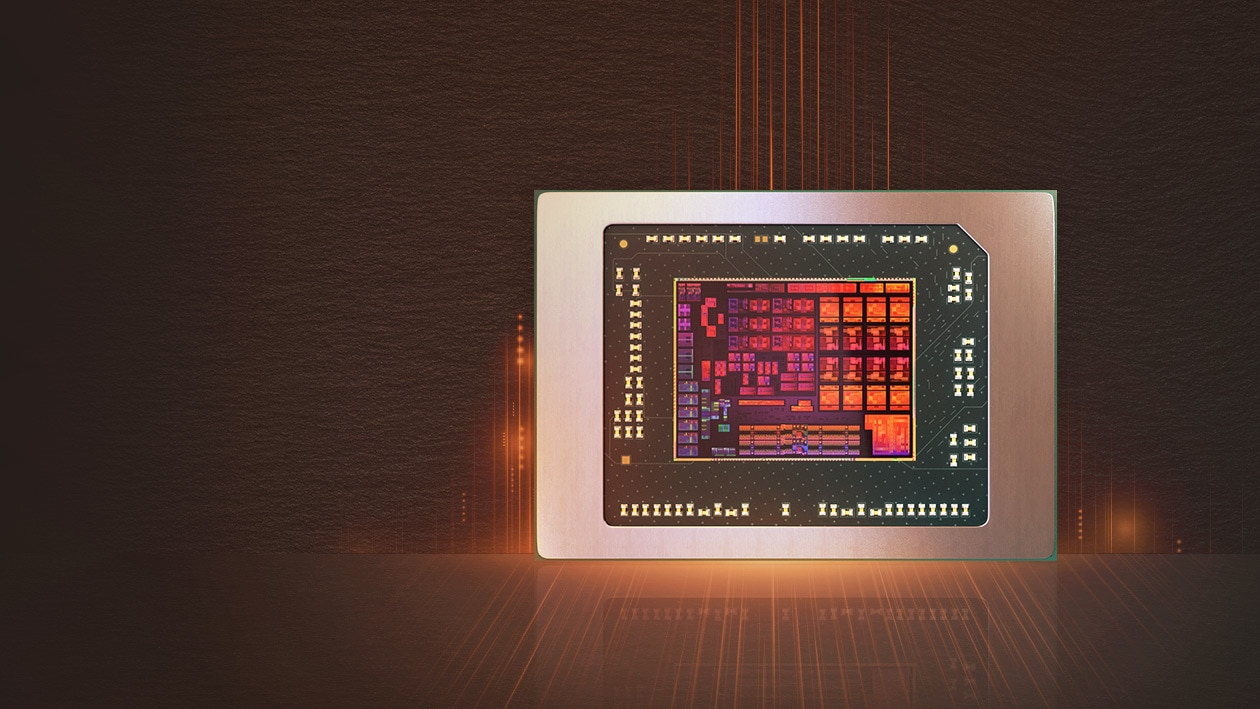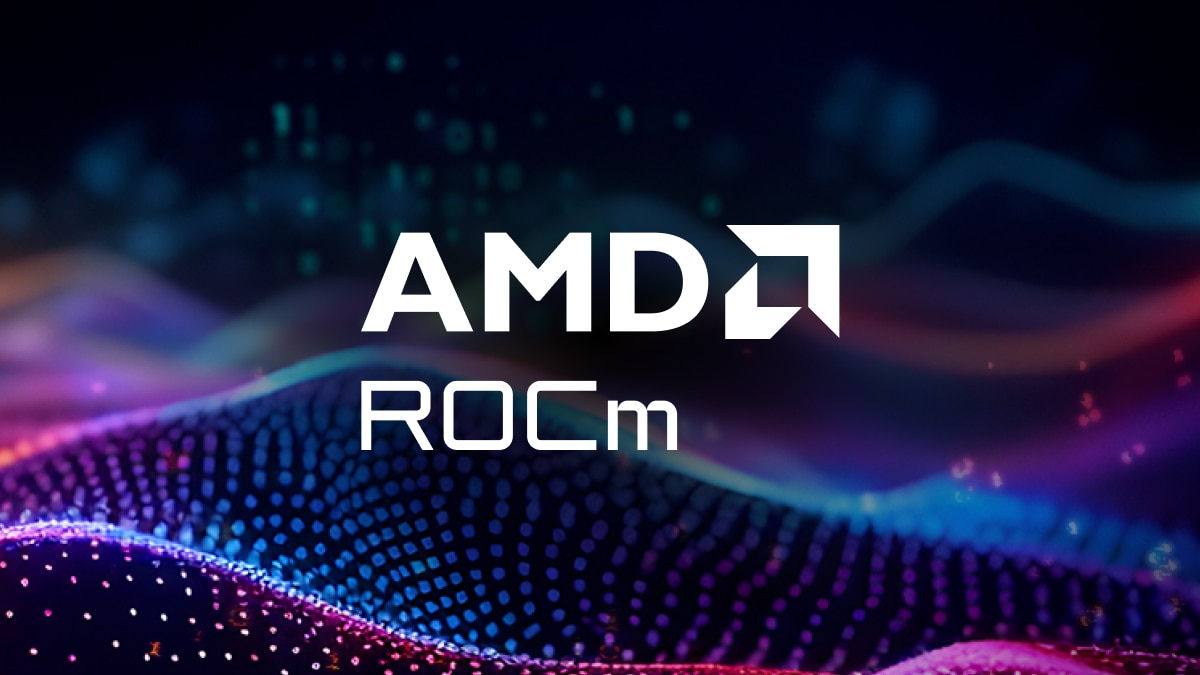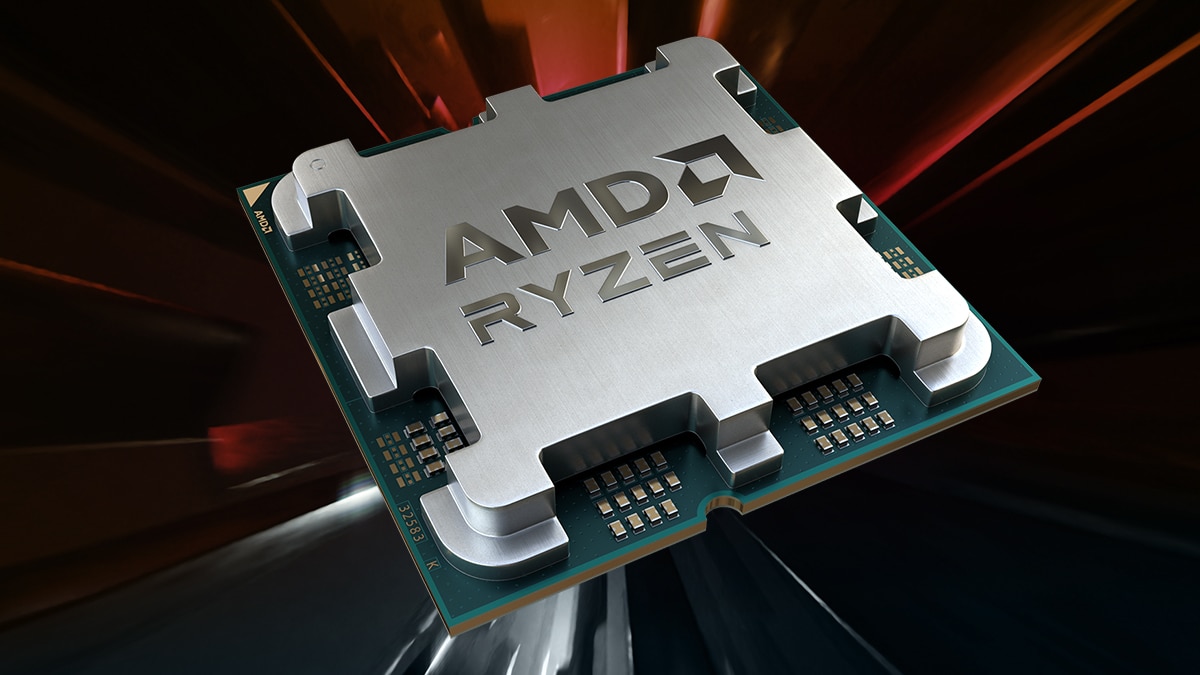The Most Advanced Graphics for Gamers & Creators
When AMD produces new graphics for gamers and creators, it does so with intention. That means bringing something new to the table; next-generation performance, efficiency, and breath-taking visual fidelity, as well as new technological innovations.
Thanks to this ethos, gamers and creators are enjoying incredible performance at every level today, from mobile PC gaming in products like the Steam Deck, to enthusiast-grade systems using the most powerful components AMD provides.
But starting December 13th, AMD will add something new to the table once again; the AMD Radeon™ RX 7900 Series graphics, and it’s based on a cutting-edge, brand-new architecture.
Taking Gaming-Optimized Compute to New Heights with AMD RDNA™ 3 Architecture
The AMD Radeon RX 7900 Series graphics is the next step in a long line of graphics that gamers and creators of all ages, needs, and use-cases have relied on for decades. Combined with the recent release of the AMD Ryzen™ 7000 Series Desktop Processors, customers have never been offered so much freedom to play and create before.
The cutting-edge AMD RDNA™ 3 architecture is engineered on an industry-advancing chiplet technology, that paves the way for new levels of performance, visuals, and power efficiency, improving performance-per-watt by 54 percent, generation over generation.1
AMD RDNA 3 architecture takes gaming-optimized compute to new heights. New unified AMD RDNA 3 compute units pack high performance, fast raytracing, and incredible AI acceleration for maximum image quality and performance at 4K and beyond.
To connect the 2nd generation of AMD Infinity Cache™ technology across our new chiplet design is the fastest chiplet interconnect in the world,2 a packaging technology that delivers 5.3 terabytes-per-second of peak bandwidth, providing an amazing 2.7X leap in peak bandwidth compared to AMD RDNA™ 2 architecture.7
The AMD Radeon RX 7900 Series graphics builds off last generation’s gaming-optimized compute with high performance rendering; a collection of compute-based AMD FidelityFX™ technologies, raytracing, and upscaling technology like AMD Radeon™ Super Resolution, all accelerated by our unified AMD RDNA 3 compute units, to deliver maximum performance and immersion in gamer’s favourite titles, from AAA to indie.3,4,5
For gamers, streamers, and creators, the new AMD Radiance Display™ Engine along with next generation Media Engine bring a combination of support for DisplayPort™ 2.1 and dual media engines featuring AV1 encode/decode,8 support up to 8K ultra high-definition resolutions, wide color gamut, and HDR enhancements – making them ideal for creators and consumers looking to enjoy HD content without suffering performance bottlenecks.
And with improvements to AMD Radeon Software technologies, including an update to FidelityFX Super Resolution 2.2, customers will experience further enhancements to visual quality across 216+ games.
Put simply, the innovative design of these GPUs makes the AMD Radeon RX 7900 Series graphics the most advanced graphics for gamers & creators.
Model |
Compute Units |
GDDR6 |
Game Clock |
Boost Clock6 |
Memory Interface |
Infinity Cache |
TBP |
Price |
AMD Radeon™ RX 7900 XTX |
96 |
24 GB |
2.3 |
Up to 2.5 |
384-bit |
96 MB |
355W |
$999 |
AMD Radeon™ RX 7900 XT |
84 |
20 GB |
2.0 |
Up to 2.4 |
320-bit |
80 MB |
315W |
$899 |
The first of the AMD Radeon RX 7900 Series graphics family will be available on-shelf and from your local distributor from December 13th. You can find your local contact details here. Bring the combined power of both the AMD Ryzen 7000 Series processors, and the new AMD Radeon RX 7900 Series graphics to customers and deliver a new class of gaming and creating performance.
Subscribe
Get monthly updates on AMD’s latest products, training resources, and Meet the Experts webinars.

Related Articles
Related Training Courses
Related Webinars
Footnotes
- Based on AMD internal analysis November 2022, on a system configured with a Radeon RX 7900 XTX GPU, driver 31.0.14000.24040, AMD Ryzen 9 5900X CPU, 32 GBDDR4-7200MHz, ROG CROSSHAIR VIII HERO (WI-FI) motherboard, set to 300W TBP, on Win10 Pro, versus a similarly configured test system with a 300W Radeon 6900 XT GPU and driver 31.0.12019.16007. System manufacturers may vary configurations, yielding different results. – RX-816
- Based on AMD internal analysis, November 2022, comparing the published chiplet interconnect speeds of Radeon RX 7900 Series GPUs to Intel Ponte Vecchio GPU and Apple M1 Ultra. – RX-817
- For additional information about AMD FidelityFX technologies, see AMD FidelityFX page. GD-172.
- AMD FidelityFX Super Resolution (FSR) 1 and 2 are available on select games and require developer integration. See AMD FidelityFX Super Resolution for a list of supported games. AMD FidelityFX Super Resolution is “game dependent” and is supported on the following AMD products. FSR 1: AMD Radeon™ RX 6000, RX 5000, RX 500, RX Vega series graphics cards, RX 480, RX 470, RX 460, and all AMD Ryzen™ processors with Radeon™ graphics if the minimum requirements of the game are met. FSR 2: AMD Radeon™ RX 6000, RX 5000, RX Vega Series graphics cards, and the Radeon™ RX 590 graphics card if the minimum requirements of the game are met. AMD does not provide technical or warranty support for AMD FidelityFX Super Resolution enablement on other vendors' graphics cards. GD-187.
- RSR works with games that support exclusive and borderless full-screen modes. AMD Software: Adrenalin Edition 22.11.X or newer is required. GD-197
- 'Boost Clock Frequency is the maximum frequency achievable on the GPU running a bursty workload. Boost clock achievability, frequency, and sustainability will vary based on several factors, including but not limited to: thermal conditions and variation in applications and workloads. – GD-151
- Based on AMD internal analysis with a AMD Radeon RX 7900 XTX GPU, 96 MB AMD Infinity Cache and 384-bit GDDR6 memory. SOC clock at 2.3GHz simultaneous reads and writes achieves 5.3TB/s vs. a AMD Radeon 6900 XT with 256b GDDR6 memory, SOC clock operating at 1.94Ghz achieving 2.0 TB/s. RX-818
- Video codec acceleration (including at least the HEVC (H.265), H.264, VP9, and AV1 codecs) is subject to and not operable without inclusion/installation of compatible media players. GD-176
- Based on AMD internal analysis November 2022, on a system configured with a Radeon RX 7900 XTX GPU, driver 31.0.14000.24040, AMD Ryzen 9 5900X CPU, 32 GBDDR4-7200MHz, ROG CROSSHAIR VIII HERO (WI-FI) motherboard, set to 300W TBP, on Win10 Pro, versus a similarly configured test system with a 300W Radeon 6900 XT GPU and driver 31.0.12019.16007. System manufacturers may vary configurations, yielding different results. – RX-816
- Based on AMD internal analysis, November 2022, comparing the published chiplet interconnect speeds of Radeon RX 7900 Series GPUs to Intel Ponte Vecchio GPU and Apple M1 Ultra. – RX-817
- For additional information about AMD FidelityFX technologies, see AMD FidelityFX page. GD-172.
- AMD FidelityFX Super Resolution (FSR) 1 and 2 are available on select games and require developer integration. See AMD FidelityFX Super Resolution for a list of supported games. AMD FidelityFX Super Resolution is “game dependent” and is supported on the following AMD products. FSR 1: AMD Radeon™ RX 6000, RX 5000, RX 500, RX Vega series graphics cards, RX 480, RX 470, RX 460, and all AMD Ryzen™ processors with Radeon™ graphics if the minimum requirements of the game are met. FSR 2: AMD Radeon™ RX 6000, RX 5000, RX Vega Series graphics cards, and the Radeon™ RX 590 graphics card if the minimum requirements of the game are met. AMD does not provide technical or warranty support for AMD FidelityFX Super Resolution enablement on other vendors' graphics cards. GD-187.
- RSR works with games that support exclusive and borderless full-screen modes. AMD Software: Adrenalin Edition 22.11.X or newer is required. GD-197
- 'Boost Clock Frequency is the maximum frequency achievable on the GPU running a bursty workload. Boost clock achievability, frequency, and sustainability will vary based on several factors, including but not limited to: thermal conditions and variation in applications and workloads. – GD-151
- Based on AMD internal analysis with a AMD Radeon RX 7900 XTX GPU, 96 MB AMD Infinity Cache and 384-bit GDDR6 memory. SOC clock at 2.3GHz simultaneous reads and writes achieves 5.3TB/s vs. a AMD Radeon 6900 XT with 256b GDDR6 memory, SOC clock operating at 1.94Ghz achieving 2.0 TB/s. RX-818
- Video codec acceleration (including at least the HEVC (H.265), H.264, VP9, and AV1 codecs) is subject to and not operable without inclusion/installation of compatible media players. GD-176

